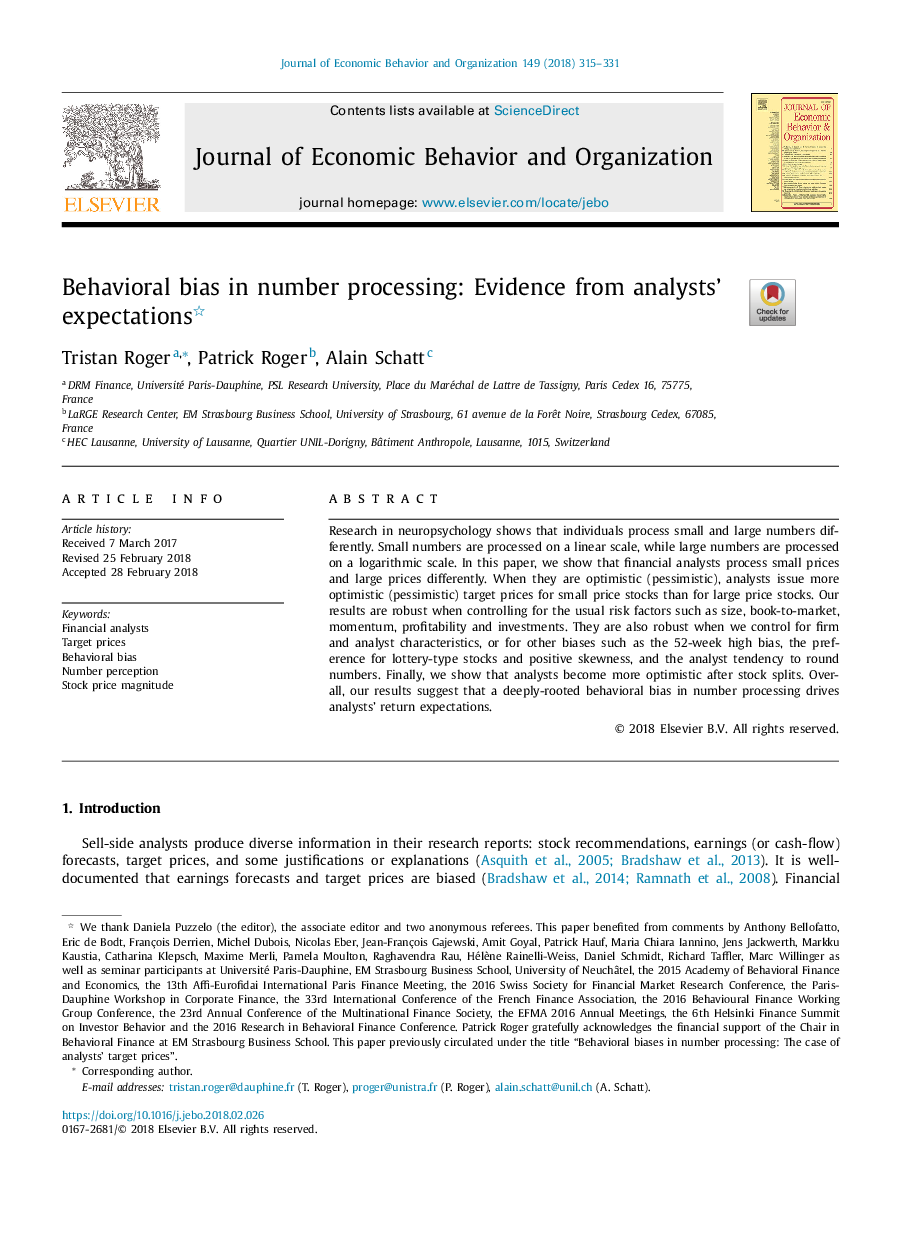| Article ID | Journal | Published Year | Pages | File Type |
|---|---|---|---|---|
| 7242588 | Journal of Economic Behavior & Organization | 2018 | 17 Pages |
Abstract
Research in neuropsychology shows that individuals process small and large numbers differently. Small numbers are processed on a linear scale, while large numbers are processed on a logarithmic scale. In this paper, we show that financial analysts process small prices and large prices differently. When they are optimistic (pessimistic), analysts issue more optimistic (pessimistic) target prices for small price stocks than for large price stocks. Our results are robust when controlling for the usual risk factors such as size, book-to-market, momentum, profitability and investments. They are also robust when we control for firm and analyst characteristics, or for other biases such as the 52-week high bias, the preference for lottery-type stocks and positive skewness, and the analyst tendency to round numbers. Finally, we show that analysts become more optimistic after stock splits. Overall, our results suggest that a deeply-rooted behavioral bias in number processing drives analysts' return expectations.
Related Topics
Social Sciences and Humanities
Economics, Econometrics and Finance
Economics and Econometrics
Authors
Tristan Roger, Patrick Roger, Alain Schatt,
